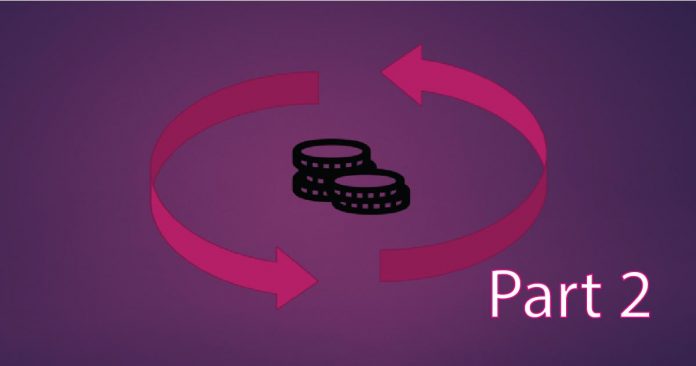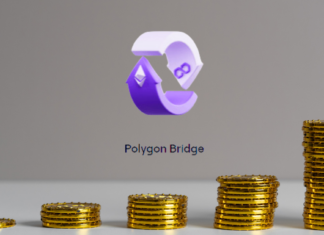This is a special article about Token Swap economics brought to us by David Freuden, a Blockchain Advisor at Monsterplay.
This is Part 2 of a 2-part article.
Both articles are focused on what happens to token price once a project swaps their ERC20 tokens to their native token.
Part 2, this article, is focused on understanding the longer impacts of the token as a direct result of what, if any, quality exchange list these new native tokens.
Part 1 is focused on token price impact projects immediate and soon after their token swap. Please click here to go to Part 1, “Should I Sell My Tokens Before or After The Token Swap”
I invite you to share your thoughts below and please share these articles with your crypto-investing networks.
I focused on evaluating 15 projects that swapped their ERC20 token to their native blockchain token. The objective of this research was to confirm the best time to buy or sell tokens for projects heading into a token swap.
After a deep dive into the price analytics, pre and post swap, I concluded that unless the token has incredibly strong brand recognition coupled with a significant market cap and high daily trading volumes, it will not attract positive investor and exchange attention.
The results: our 15 projects only one token had improved token price. The remaining 14 tokens tanked from when they conducted their token swap to June 30th by between 50%-90%.
There are several reasons for their token price plummeting. One of the major reasons was almost none of them were able to list their native token on a Tier 1 exchange. Native tokens have proven significantly more difficult to list on quality exchanges than most projects initially thought.
This article as a continuation of previous articles research focuses specifically on the “exchange listing effect on token price post token swaps”. The research will look to draw inferences on which category of exchanges is listing these native coins after the token swap; and what is the correlation between:
- The quality of exchanges willing to list native tokens
- Post token swap liquidity and price growth scenarios
The Exchange effect on token price after token swap
We researched 13 tokens from the previous article: EOS, Tron, Icon, Aion, Binance Coin, Augur, VeChain, PundiX, IOST, Tomochain, Mithril, Zilliqa, and CyberMiles Token. At the time of writing this article, two of the tokens, WeOwn (CHX) and Matrix AI have yet to list their native token on a new exchange since their token swap.
We tracked the exchanges that have listed these 13 tokens and they range from the biggest players (Tier 1) like Binance to Tier 3 exchanges that most people have never even heard of.
The full list of exchanges and dates that these 13 coins were listed can be seen below:

In total, 110 exchanges listed these native13 coins after their token swap. Whilst this number sounds impressive, and you may even be thinking ‘Wow are there 110 exchanges!’, the real question is what, if any, impact have these exchanges had on these projects token price.
We have categorized these exchanges into three tiers: Tier 1, Tier 2 and Tier 3. This classification is based on the adjusted average daily trading volume of each exchange. We have used Coingecko as the resource for research on exchange volume. Coingecko issues an exchange trust score and provides a ‘normalised’ daily trade volume, which eliminates much of the wash trading and fake trading volume. For more information on the Coingecko methodology to normalize trade volumes and provide an exchange Trust Score please click here.
The majority of the fake volume is generated by:
- Exchanges internal market makers (they don’t pay exchange fees)
- External market makers that pay no/low trading fees
- the new model of transaction mining where the traders are “compensated” the trading fee with new exchange tokens.
We use ‘normalised’ volume as it provides a strong basis for eliminating fake trades and showing exchange volume based on more realistic trading volumes.
Below is a screengrab from 20th Sept 2019 of Coingecko exchange listing showing Top 10 exchanges. It is important to note that their 24h volume will differ significantly during the day which will impact the order and ranking of each exchange. Additionally, the data represented on other websites such as Coinmarketcap differs from Coingecko as the former has not been able to fully crack the model for removing fake trading from its volume analytics.
Categorization:
Tier 1 Exchanges: Daily trading volume of more than USD 70 Million
- Include only 9 exchanges: Binance, Coinbase Pro, Huobi Global, UpBit, Kraken, Bitfinex, Bitsamp, Kucoin and HitBTC
Tier 2 Exchanges: Daily trading volume between USD 15–70 Million
- Includes 31 exchanges such as Okex, Bithumb, Bitforex, Coinone, Bittrex etc.
Tier 3 Exchanges: Daily trading volume below 15 Million
- These also include some popular names like FCoin, BiBox, CoinBene, etc, some of which have been reported to have zero 24 hours adjusted volume.
Grading these 110 exchanges:
Below we match each exchange listings Tiers for each coin. Each row has been colour-coded to help identify the exchange-listed.
- Tier 1 exchange: Green
- Tier 2 exchange: Blue
- Tier 3 exchange: Red
Is this the most rigorous way to categorize exchanges and analyze which exchange peddles in wash trading and fake volumes? Maybe. Maybe not. But it is a logical approach to differentiate exchanges to suit our objective of targeting and evaluating only exchanges that support native tokens for listing, post token swap.
Tier 3 Exchanges and Their Trading Volume
We have analyzed the trading volumes of these 13 coins listed on Tier 3 exchanges. The data represented below focuses solely on the daily trading volume generated in Tier 3 exchanges for these coins. It is clear that the volume is minuscule and has no impact on price discovery. To understand the price impact here, let us consider the top three volumes of the 13 projects each on the given exchanges. Here, looking at the data, only EOS has respectable liquidity. The other projects have low (or fake) volumes on the exchanges they are listed on, making the listing on the exchange worthless.
Exchange and Swaps
We have also evaluated the data from another angle. Consider the image below:
This pie chart highlights the category of exchanges for each coin. As you can see, majority of the coins, 84%, are listed on Tier 3 exchanges which offer traders little to no volume.
We can conclude the following with a high probability of confidence:
A) Tier 1 exchanges are increasingly choosy when listing tokens, and rightly so. If a project is not on the standard ERC 20, they need be a have a big brand name and/or be ready to shell out a significant “fee” for listing on the Tier 1 exchange. This point may be obvious to some, not to all. But why would a Tier 1 exchange incur the additional costs related to wallet integration, security, and ongoing support associated with a non-ERC20 token if this token offers little to no trading volume to support their token listing.
B) 84% of native tokens were only able to list is Tier 3 exchanges. Another 11% is listed on Tier 2 exchanges.
Tier 1 vs Tier 2 Exchanges:
Taking a look at the average daily trading volume on the three exchanges,
· Average Daily Trading Volume Tier 1 (6) = USD 129,342,307
· Average Daily Trading Volume Tier 2 (12) = USD 22,659,579
· Average Daily Trading Volume Tier 3 (92) = USD 2,495,216
Though the average trading daily volume of Tier 3 exchanges is over $2 million, the number, in reality, is significantly lower as many of these exchanges engage in fake and wash trading. There is a massive difference in volumes for Tier 1 and Tier 2 as well, with Tier 1 enjoying volumes 5.7 times of Tier 2.
But it is comparatively much cheaper and faster to list on Tier 2 and alongside it gives the necessary liquidity to the token. Also, once you have decent daily trading volume in Tier 2, pushing Tier 1 exchanges for a listing should be much easier.
Additionally, it is important to note what percentage of exchange trading is BTC in comparison with all altcoins. For almost all exchanges, their largest trading volumes are for BTC. So the total amount of trading funds for altcoins is the total trading volume less BTC trading volume.
Conclusion
Many projects launched using ERC20 as it provided speed to market and ability to raise funds quickly as well as easier pathway to list on exchanges as almost all exchanges list ERC20 tokens. The challenge is when these projects are ready to launch their mainnet and need to conduct a token swap from their ERC20 token to their native token.
In the previous article, we saw how the price of the token is greatly influenced after the mainnet launch. This article has been focused on one of the reasons why their price dies — the fact that after mainnet, these native tokens do not/ cannot get listed Tier-1 exchanges. Most of them can’t even get listed on Tier 2 exchanges. The data is conclusive that this has an immediate and long-term negative impact on their token liquidity and pricing.
Key Takeaways
Exchange listings are critical after a token swap. If the token is unable to get listed onto a Tier 1 exchange in a timely manner, it won’t have access to the multi-billion-dollar daily trading volume generated on these platforms and the new investors who refuse to register on Tier 2 & Tier 3 exchanges
- The total number of exchanges the token is listed on is inconsequential. Very few traders are going to register with a new exchange just to trade a token. If you are not in the tier 1 exchanges, forget you will be able to generate any significant daily volume.
- The 13 tokens are listed on 110 exchanges but only 6 of these exchanges qualify as Tier 1 (Daily Trading volume > $ 70 Million). This represents 5% of exchanges.
- If the project is executing a token swap and is unable to give you clarity concerning listing on Tier 1 exchanges post-swap, consider selling!
If you haven’t read Part 1 of this article, I invite you to click this link: “Should I Sell My Tokens Before or After The Token Swap”.





































